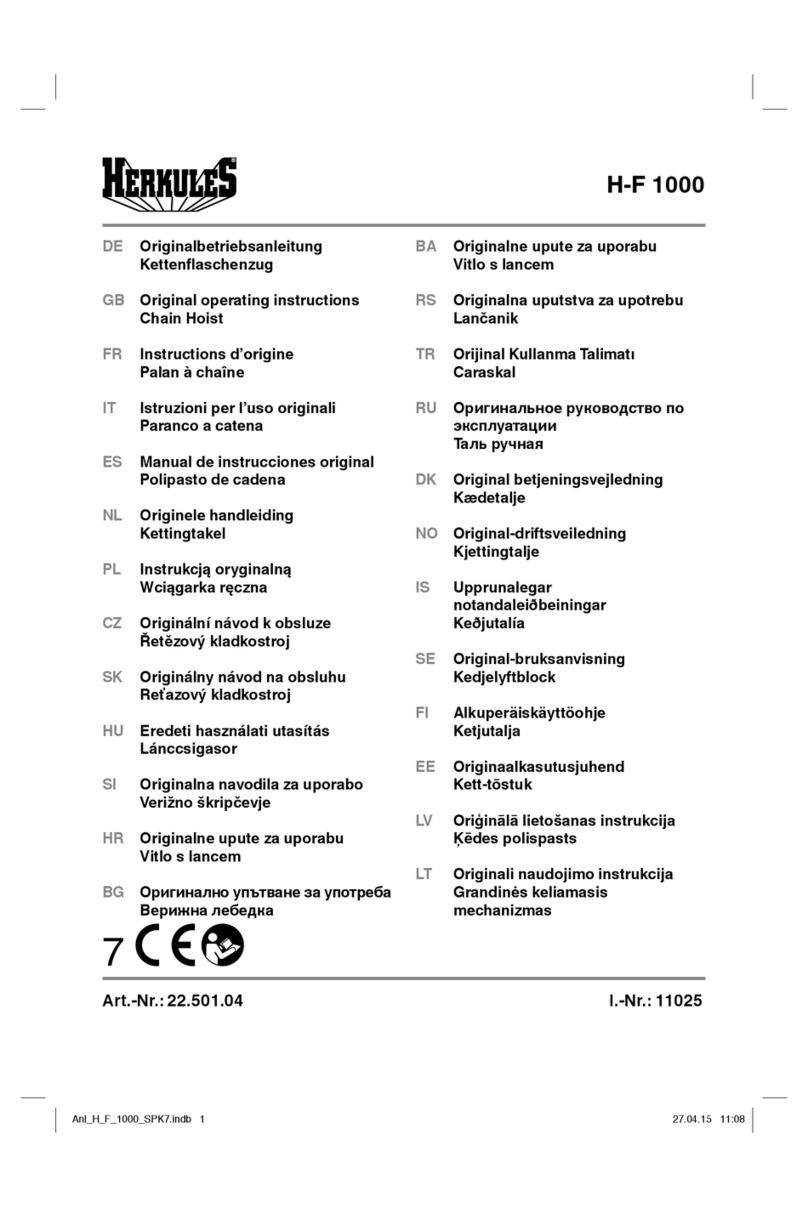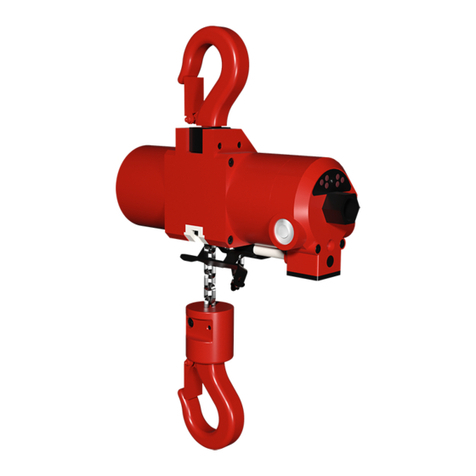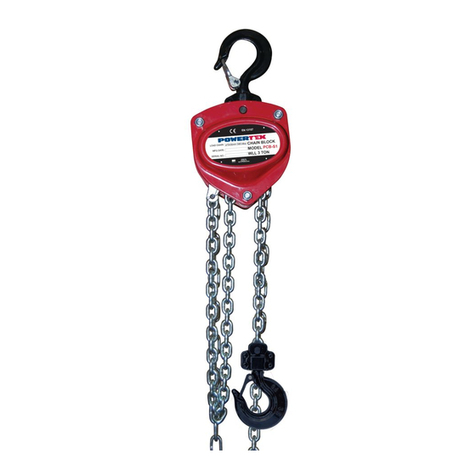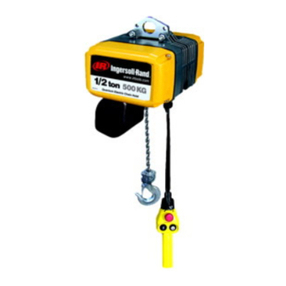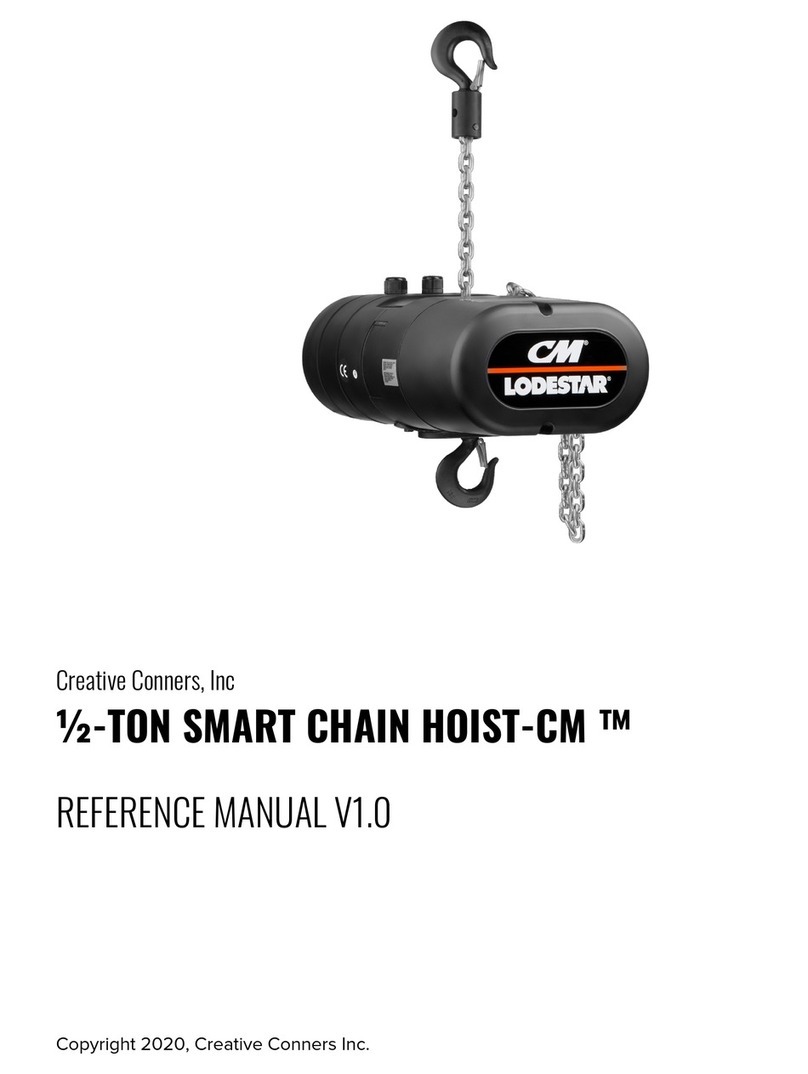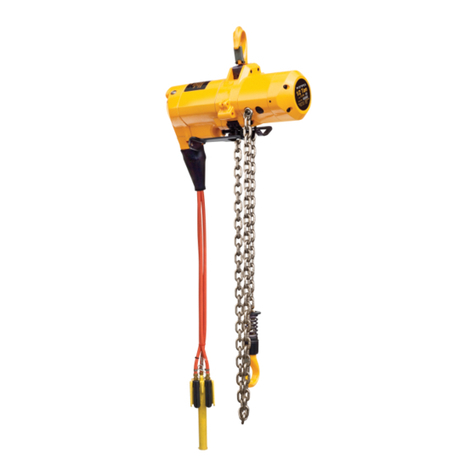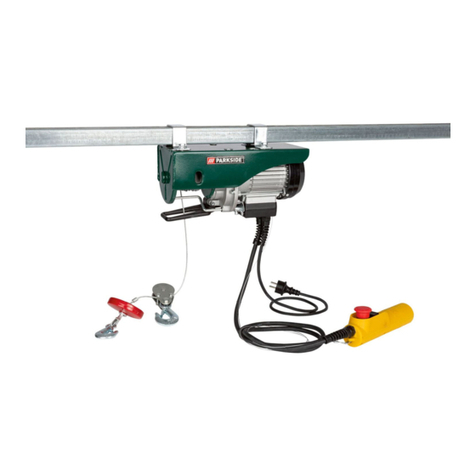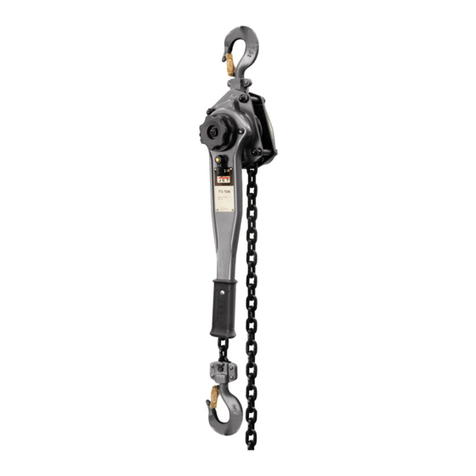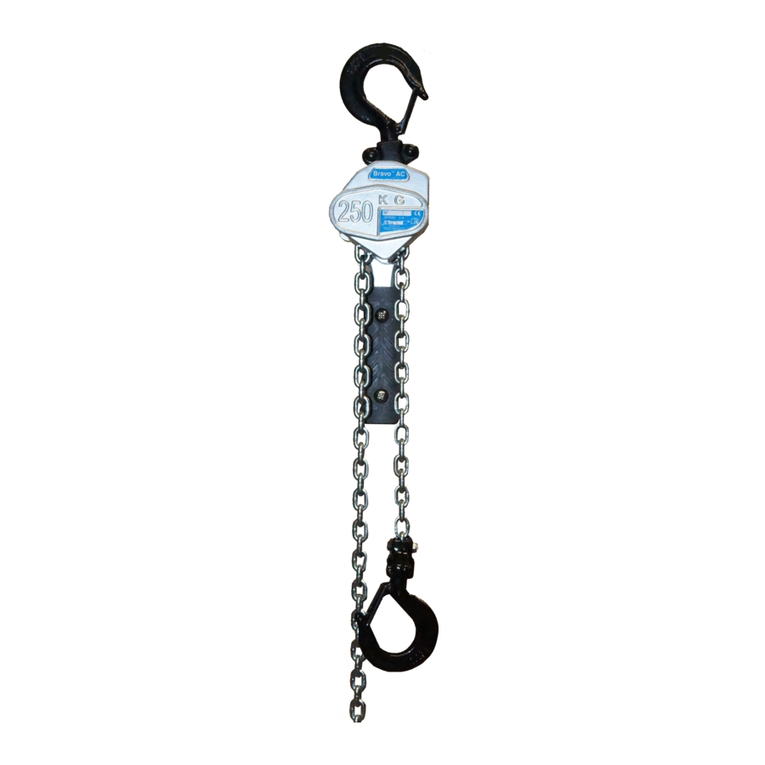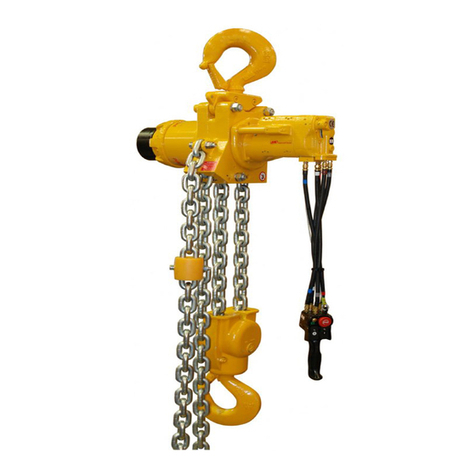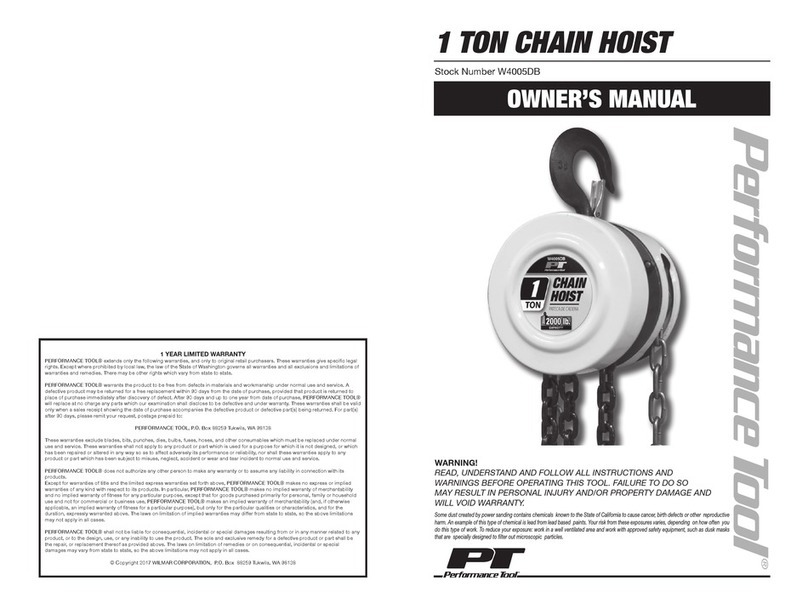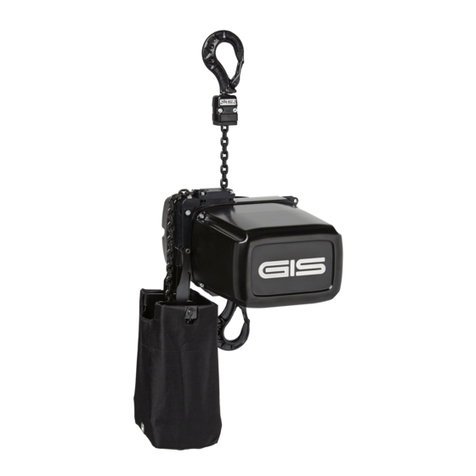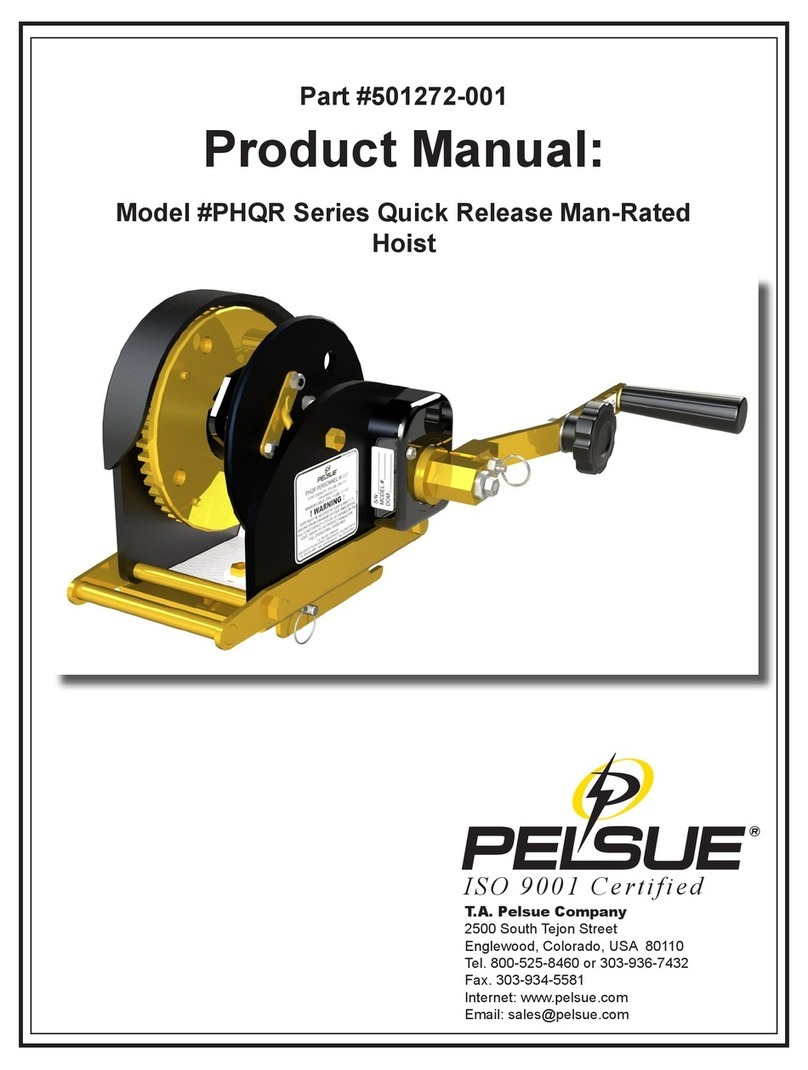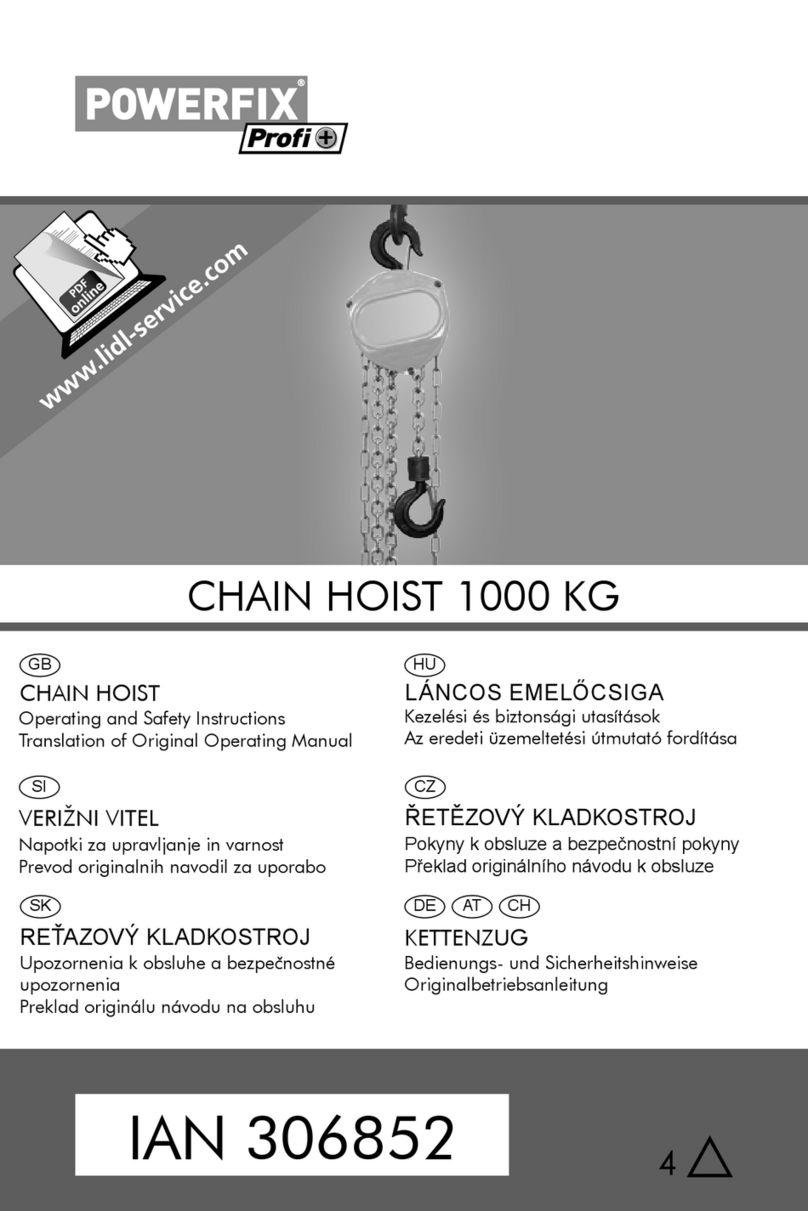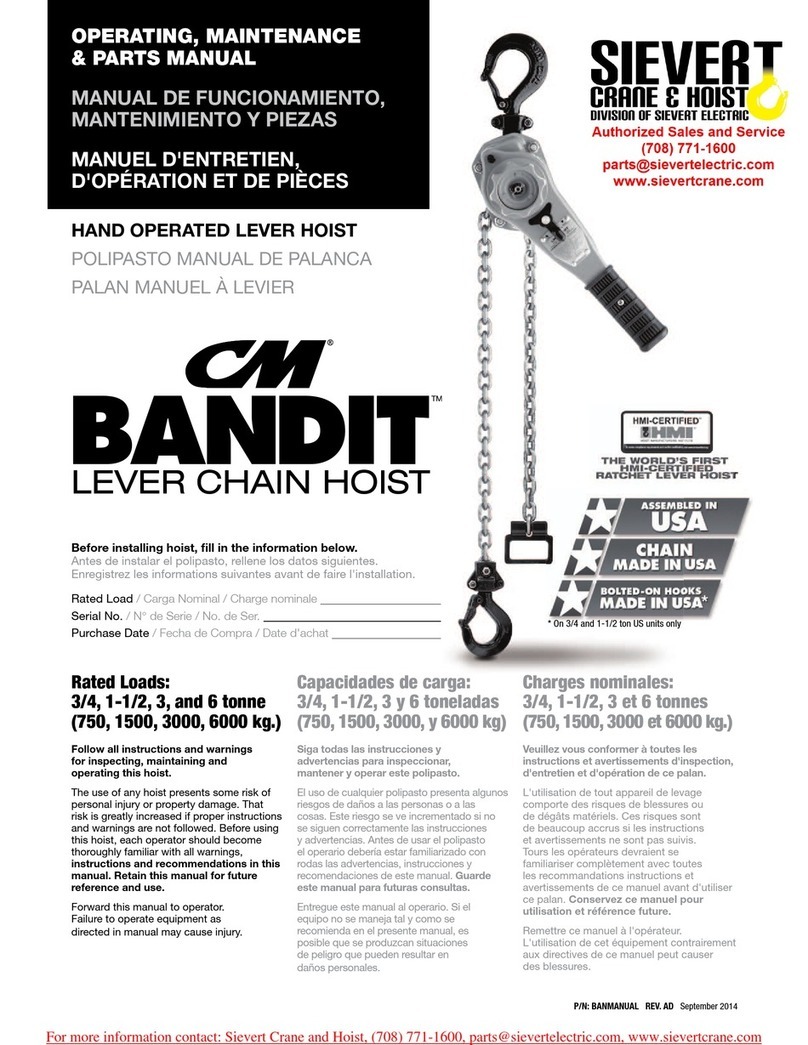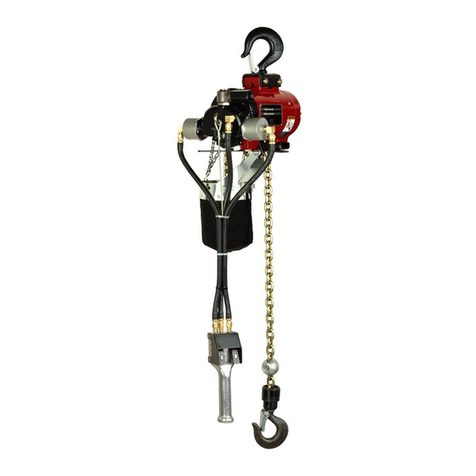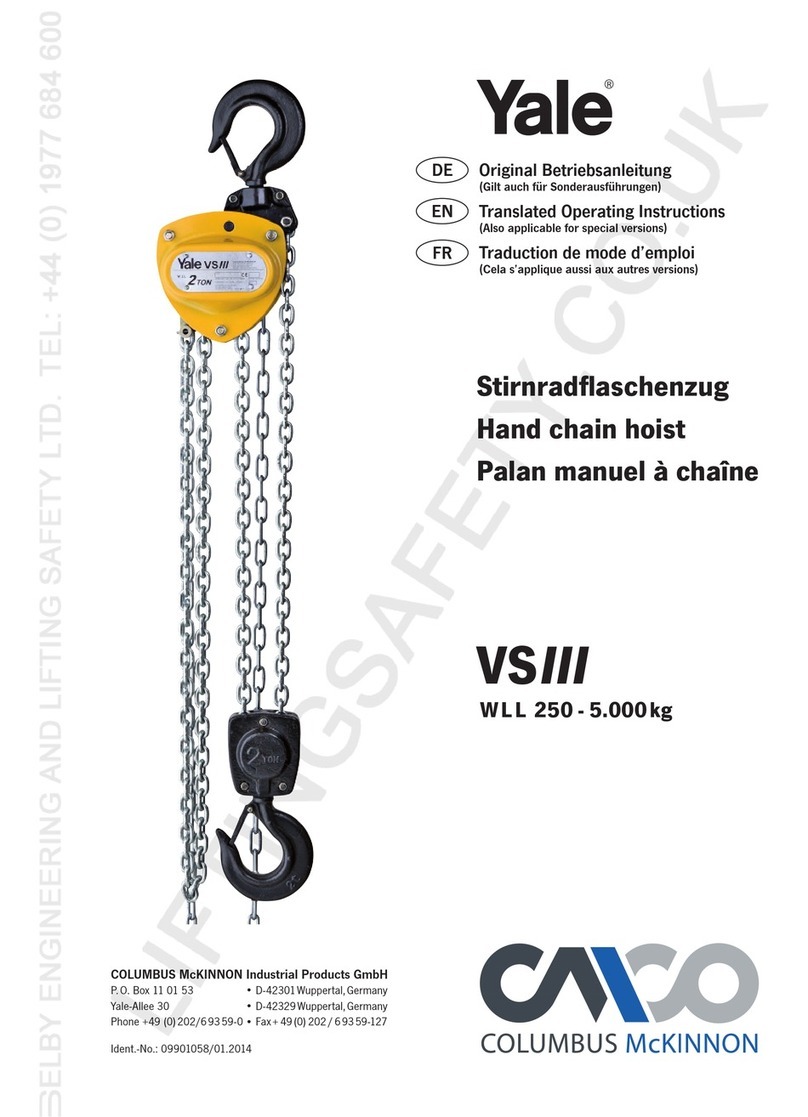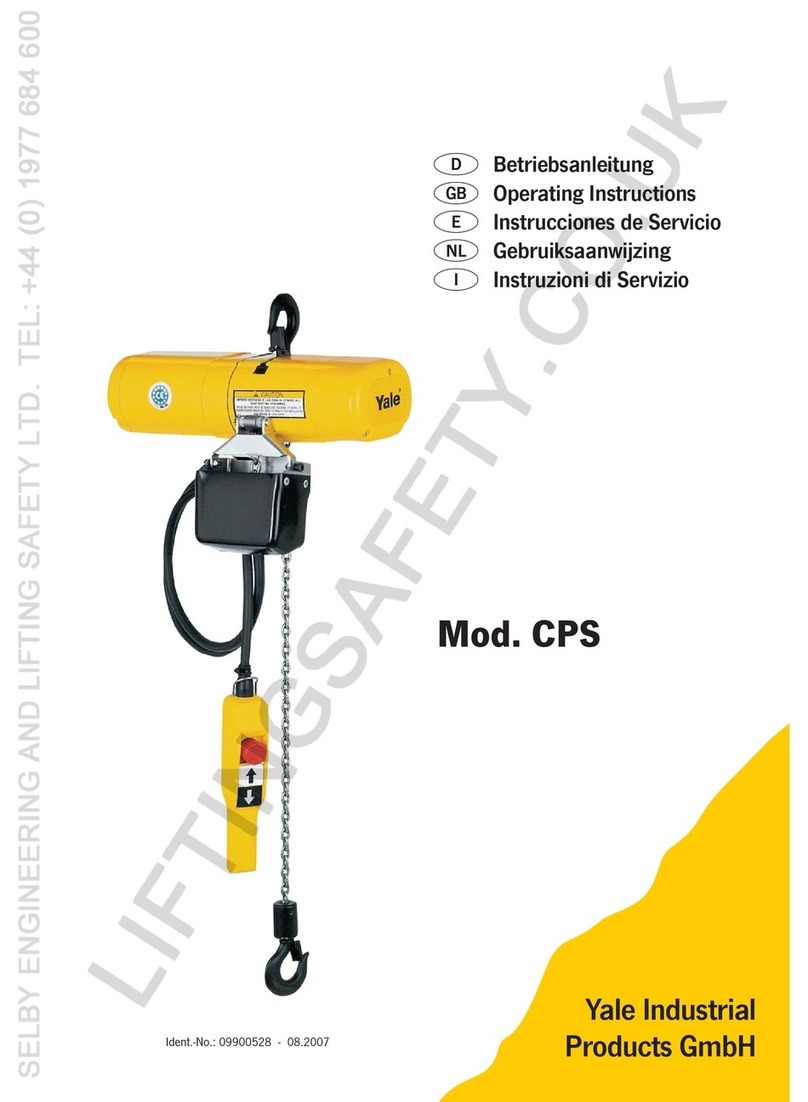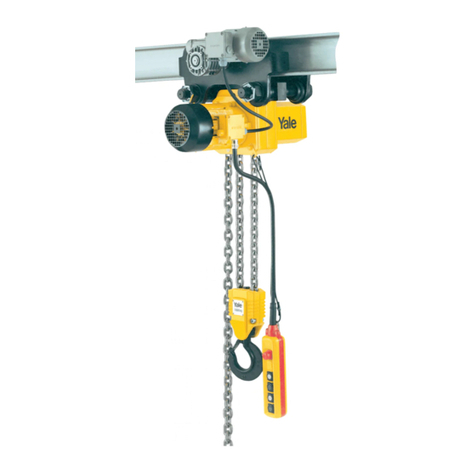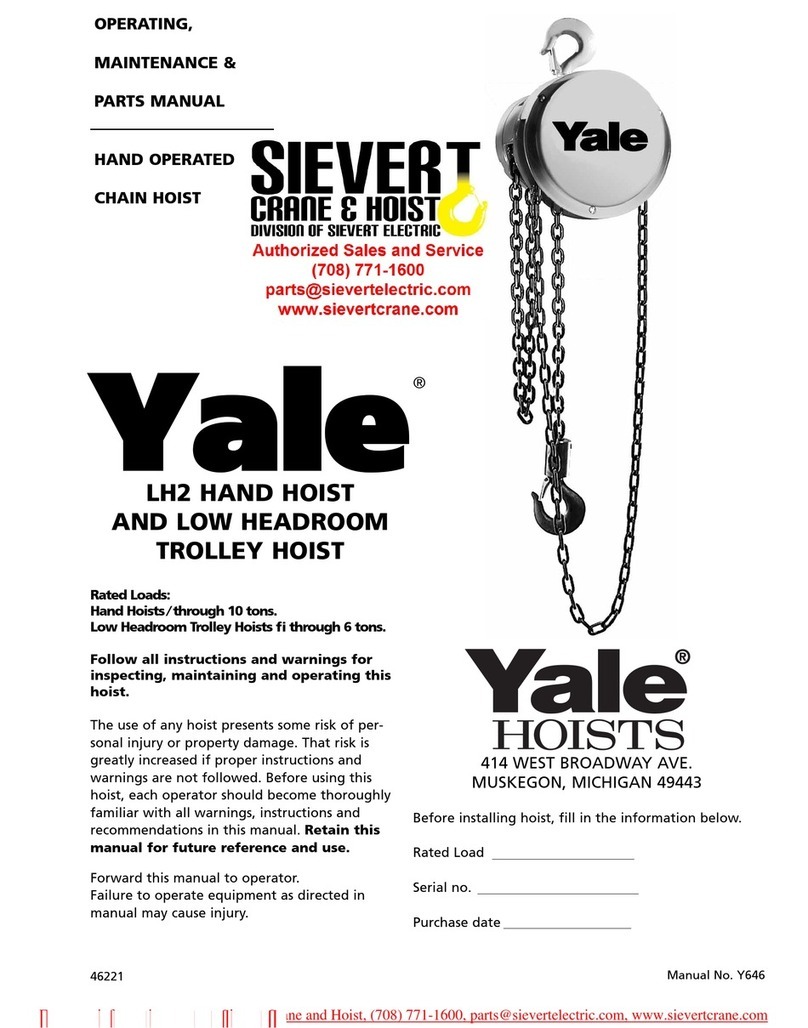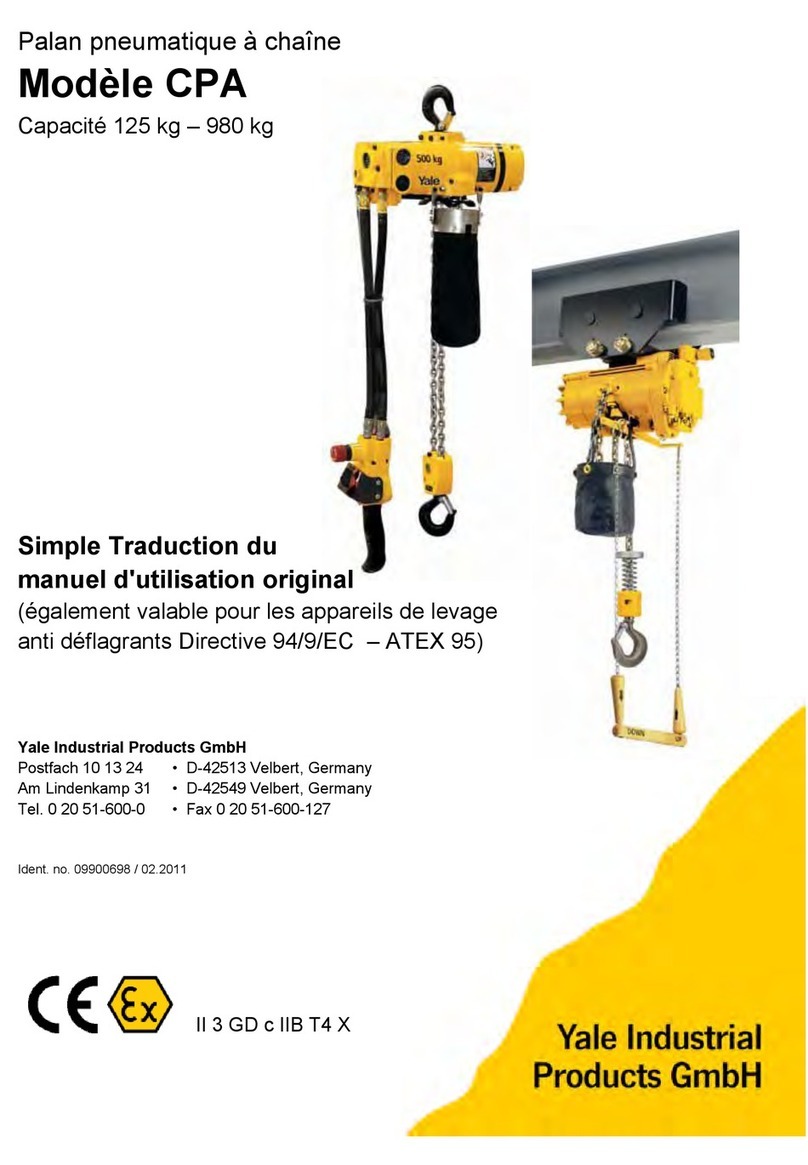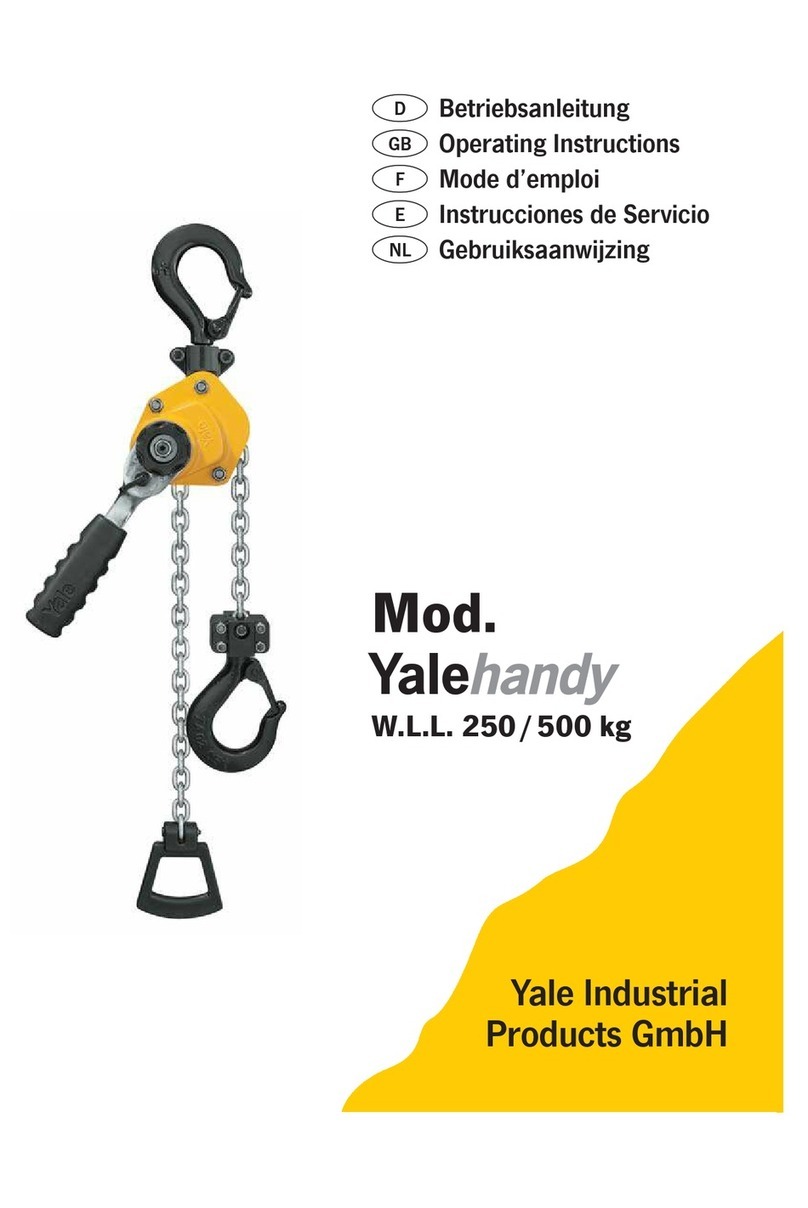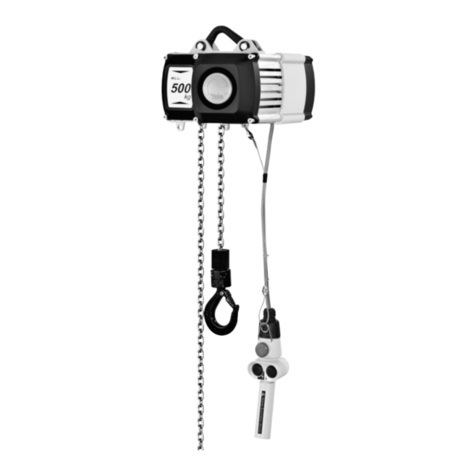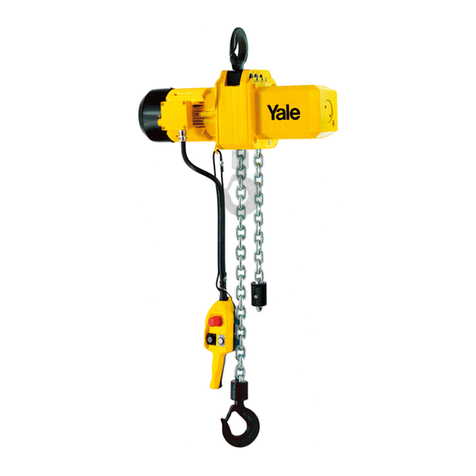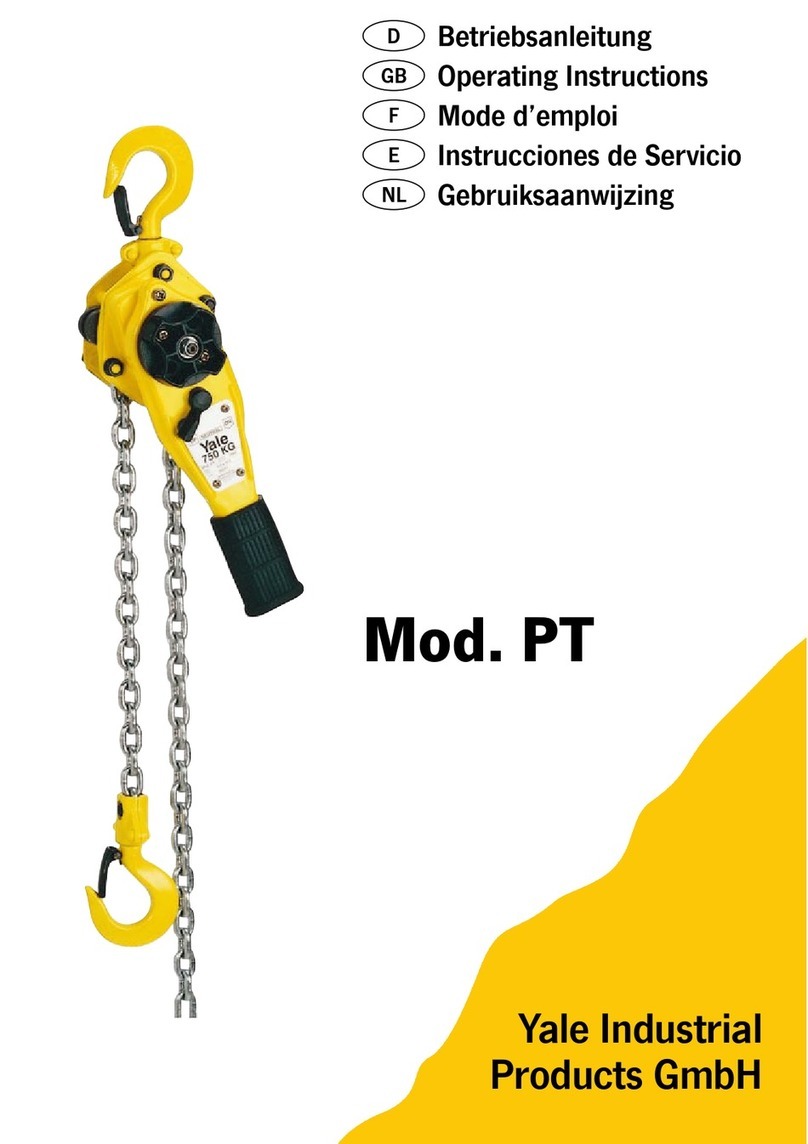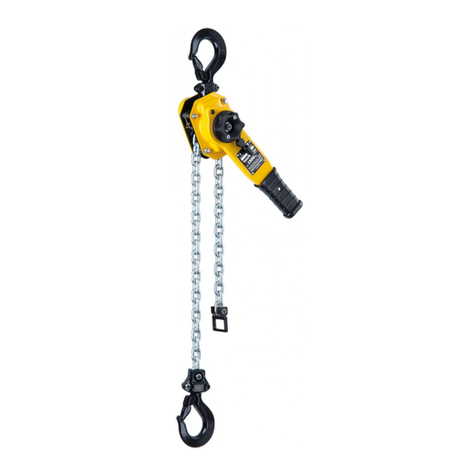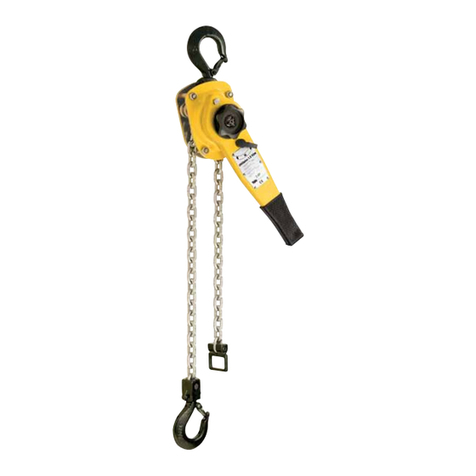
4 von 18
ACHTUNG: Die jeweiligen Einsatzbedingun-
gen (z.B. in der Galvanik) können kürzere
Prüfintervalle notwendig machen.
Reparaturarbeiten dürfen nur von Fachwerk-
stätten, die Original Yale-Ersatzteile verwen-
den, durchgeführt werden. Die Prüfung (im
Wesentlichen Sicht- und Funktionsprüfung) hat
sich auf die Vollständigkeit und Wirksamkeit
der Sicherheitseinrichtungen sowie auf den
Zustand des Gerätes, der Tragmittel, der
Ausrüstung und der Tragkonstruktion hin-
sichtlich Beschädigung, Verschleiß, Korrosion
oder sonstigen Veränderungen zu erstrecken.
Die Inbetriebnahme und die wiederkehrenden
Prüfungen müssen dokumentiert werden (z.B.
in der CMCO-Werksbescheinigung).
Auf Verlangen sind die Ergebnisse der Prü-
fungen und die sachgemäße Reparaturdurch-
führung nachzuweisen. Ist das Hebezeug (ab
1t Hubgewicht) an oder in einem Fahrwerk
eingebaut und wird mit dem Hebezeug
eine gehobene Last in eine oder mehrere
Richtungen bewegt, wird die Anlage als Kran
betrachtet und es sind ggf. weitere Prüfungen
durchzuführen.
Lackbeschädigungen sind auszubessern, um
Korrosion zu vermeiden. Alle Gelenkstellen
und Gleitflächen sind leicht zu schmieren.
Bei starker Verschmutzung ist das Gerät zu
reinigen.
Spätestens nach 10 Jahren muss das Gerät
einer Generalüberholung unterzogen werden.
Insbesondere die Maße der Lastkette, des
Last- und des Traghakens bedürfen der Be-
obachtung. Sie sind mit den Tabellenmaßen
(Tab. 2, Tab. 3) zu vergleichen.
ACHTUNG: Der Austausch von Bauteilen
zieht zwangsläufig eine anschließende Prüfung
durch eine befähigte Person nach sich!
Prüfung der Lastkette (nach DIN 685-5)
Die Lastkette ist jährlich, jedoch spätestens
nach 50 Betriebsstunden auf mechanische
Schäden zu untersuchen. Sie muss auf äußere
Fehler, Verformungen, Anrisse, Korrosionsnar-
ben, Verschleiß und ausreichende Schmierung
überprüft werden.
Rundstahlketten müssen ausgewechselt wer-
den, wenn die ursprüngliche Nenndicke ´d´
am stärksten verschlissenen Kettenglied um
mehr als 10 % abgenommen hat oder wenn
die Kette über eine Teilung ´pn´ eine Längung
von 5% (Fig. 14) oder 11 Teilungen (11 x pn)
eine Längung von 3 % erfahren hat.
Die Nominalwerte und Verschleißgrenzen sind
Tabelle 2 zu entnehmen.
Bei Erreichen eines der Grenzwerte ist die
Lastkette auszutauschen.
Wartung der Lastkette
Kettenverschleiß in den Gelenkstellen ist in
den weitaus meisten Fällen auf ungenügende
Pflege der Kette zurückzuführen. Um eine
optimale Schmierung der Umlenkungen zu ge-
währleisten, muss die Kette in regelmäßigen,
auf den Einsatz abgestimmten Zeitabständen,
mit kriechfähigem Schmierstoff (z.B. Getriebe-
öl) geschmiert werden.
Bei verschleißfördernden Umgebungsein-
flüssen, wie z.B. Sand etc. sollte ein Tro-
ckenschmiermittel, wie z.B. PTFE-Spray,
verwendet werden.
Durch eine sorgfältige Schmierung der
Lastkette kann die Standzeit auf das 20- bis
30-fache gegenüber einer ungewarteten Kette
verlängert werden.
- Beim Schmiervorgang ist die Kette zu
entlasten, damit das Öl die verschleißbe-
anspruchten Umlenkungen benetzen kann.
Die aneinander liegenden Umlenkungen
müssen stets Schmierstoff aufweisen,
ansonsten kommt es zu einem erhöhten
Kettenverschleiß.
- Es genügt nicht, die Ketten von außen zu
schmieren, weil so nicht gewährleistet ist,
dass sich in den Umlenkstellen ein Schmier-
film aufbaut.
- Bei konstantem Hubweg der Kette muss auf
den Umschaltbereich von Hub- in Senkbewe-
gung besonders geachtet werden.
- Es ist darauf zu achten, dass die Lastkette
über ihre gesamte Länge geschmiert wird,
auch der Teil der Kette, der sich im Gehäuse
des Hebezeuges befindet.
- Verschmutzte Ketten mit Petroleum oder
einem ähnlichen Reinigungsmittel säubern,
keinesfalls die Kette erhitzen.
- Beim Schmiervorgang muss der Verschleiß-
zustand der Kette mit überprüft werden.
ACHTUNG: Es ist dafür Sorge zu tragen, dass
kein Schmiermittel in den Bremsraum gelangt.
Ein Versagen der Bremse kann die Folge sein.
Austausch der Lastkette
Die Lastkette ist bei sichtbaren Beschädigun-
gen oder Verformungen, jedoch spätestens
bei Erreichen der Ablegereife, durch eine
neue Kette gleicher Abmessungen und Güte
zu ersetzen.
Der Austausch einer ablegereifen Lastkette
darf nur von einer autorisierten Fachwerkstatt
durchgeführt werden.
Es dürfen nur Lastketten eingebaut werden,
die vom Hersteller zugelassen sind. Bei
Nichteinhaltung dieser Vorgabe erlischt die
gesetzliche Gewährleistung bzw. Garantie mit
sofortiger Wirkung.
Hinweis: Ein Lastkettenwechsel ist ein doku-
mentationspflichtiger Vorgang!
Einstrangiges Hebezeug
- Neue Kette nur im entlasteten Zustand
einziehen.
- Als Hilfsmittel wird ein offenes Lastketten-
glied benötigt. Es kann durch Herausschlei-
fen eines Stückes aus einem vorhandenen
Kettenglied gleicher Dimension hergestellt
werden. Dabei muss die Länge des he-
rausgetrennten Stückes mindestens der
Kettengliedstärke entsprechen.
- Lasthaken von der alten Lastkette demontie-
ren und offenes Lastkettenglied in das lose
Ende der Lastkette hängen.
- Die neue, geschmierte Lastkette ist ebenfalls
in das offene Kettenglied einzuhängen und
durch das Hubwerk zu ziehen (Handrad im
Uhrzeigersinn drehen).
- Kette nicht verdreht einbauen. Die Schweiß-
nähte müssen vom Lastkettenrad nach
außen weisen.
- Sobald die alte Lastkette das Hubwerk
durchlaufen hat, kann sie zusammen mit
dem offenen Kettenglied ausgehängt und
der Lasthaken an der neu eingezogenen
Lastkette befestigt werden.
- Das Kettenendstück muss vom Leerstrang
der alten, ausgetauschten Lastkette entfernt
und am Leerstrang der neu eingezogenen
Lastkette angebracht werden.
ACHTUNG: Das Kettenendstück muss
unbedingt am losen Kettenende (Leerstrang)
montiert/vorhanden sein (Fig. 12).
Mehrstrangiges Hebezeug
ACHTUNG: Neue Kette nur im entlasteten
Zustand der Unterflasche einziehen, da die
Unterflasche sonst beim Lösen der Lastkette
herunterfallen kann. Verletzungsgefahr!
- Als Hilfsmittel wird ein offenes Lastketten-
glied benötigt. Es kann durch Herausschlei-
fen eines Stückes aus einem vorhandenen
Kettenglied gleicher Dimension hergestellt
werden. Dabei muss die Länge des he-
rausgetrennten Stückes mindestens der
Kettengliedstärke entsprechen.
- Das Laststrangende der Lastkette vom Ge-
häuse des Hubwerks oder der Unterflasche
lösen (je nach Modell).
- Vorbereitetes, offenes Lastkettenglied in das
nun freie Lastkettenende hängen.
- Die neue, geschmierte Lastkette ebenfalls in
das offene Kettenglied einhängen und durch
die Unterflasche und das Hubwerk ziehen
(Handrad im Uhrzeigersinn drehen).
- Kette nicht verdreht einbauen. Die Schweiß-
nähte müssen vom Lastkettenrad nach
außen weisen.
- Sobald die alte Lastkette das Hubwerk durch-
laufen hat, kann sie zusammen mit dem
offenen Kettenglied ausgehängt werden.

